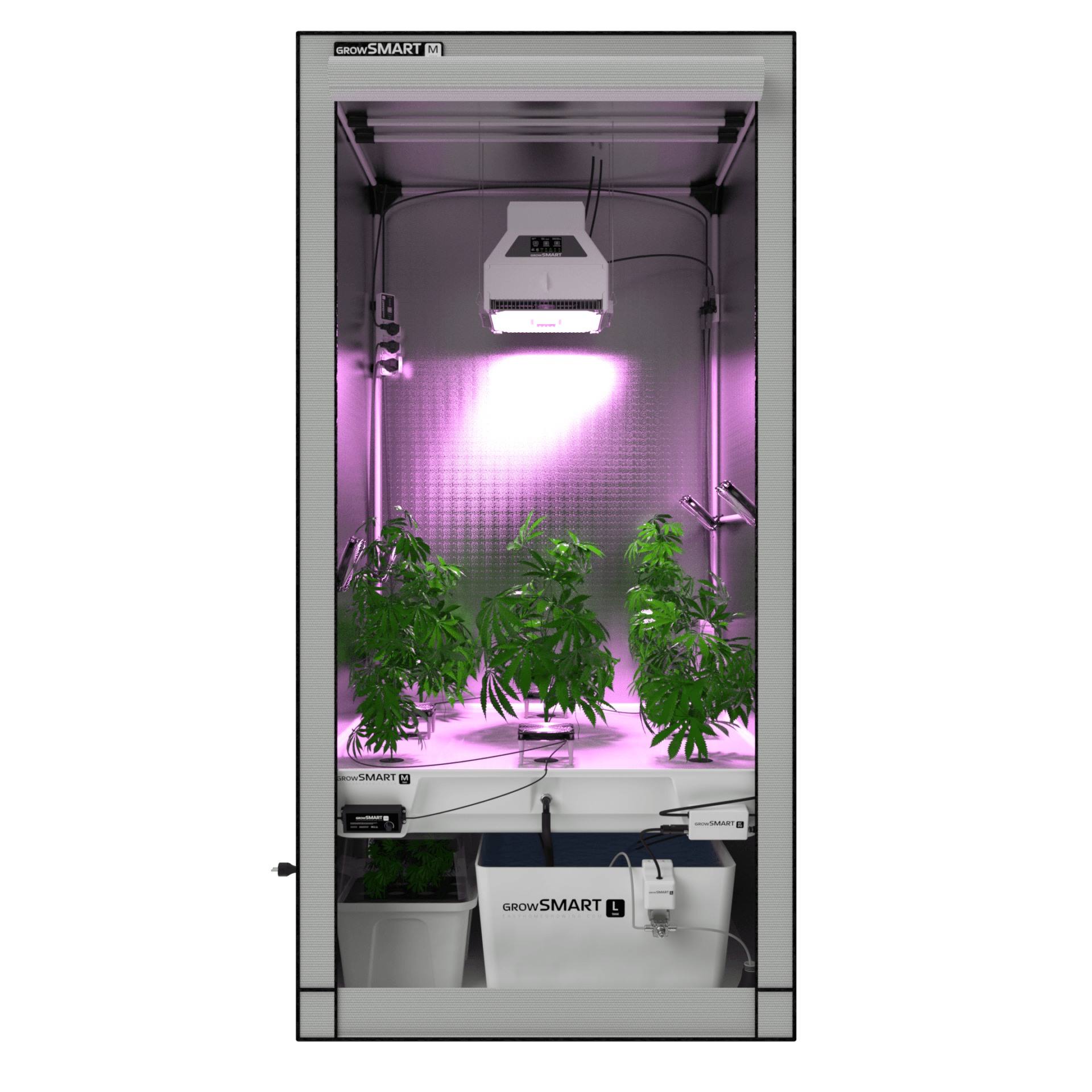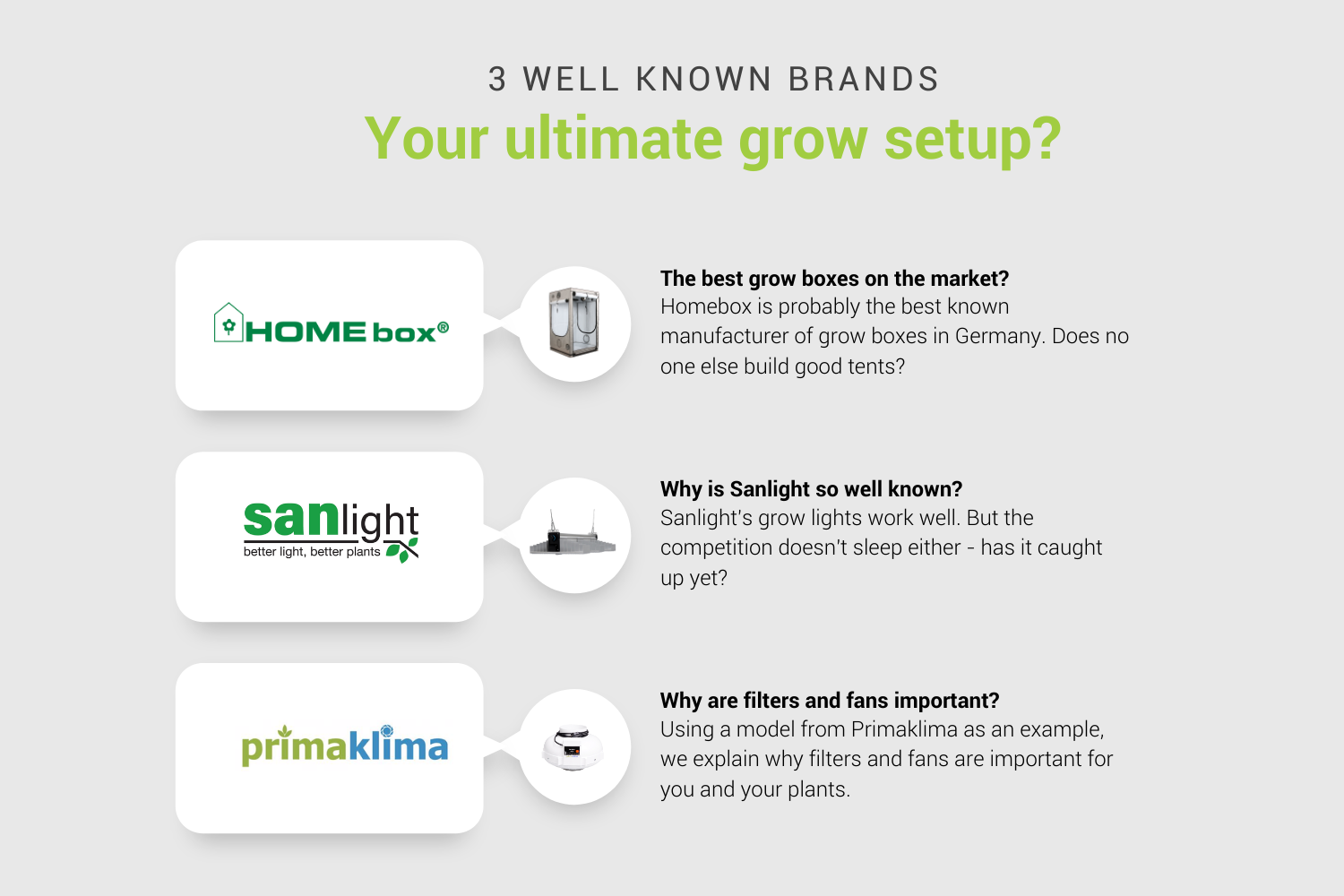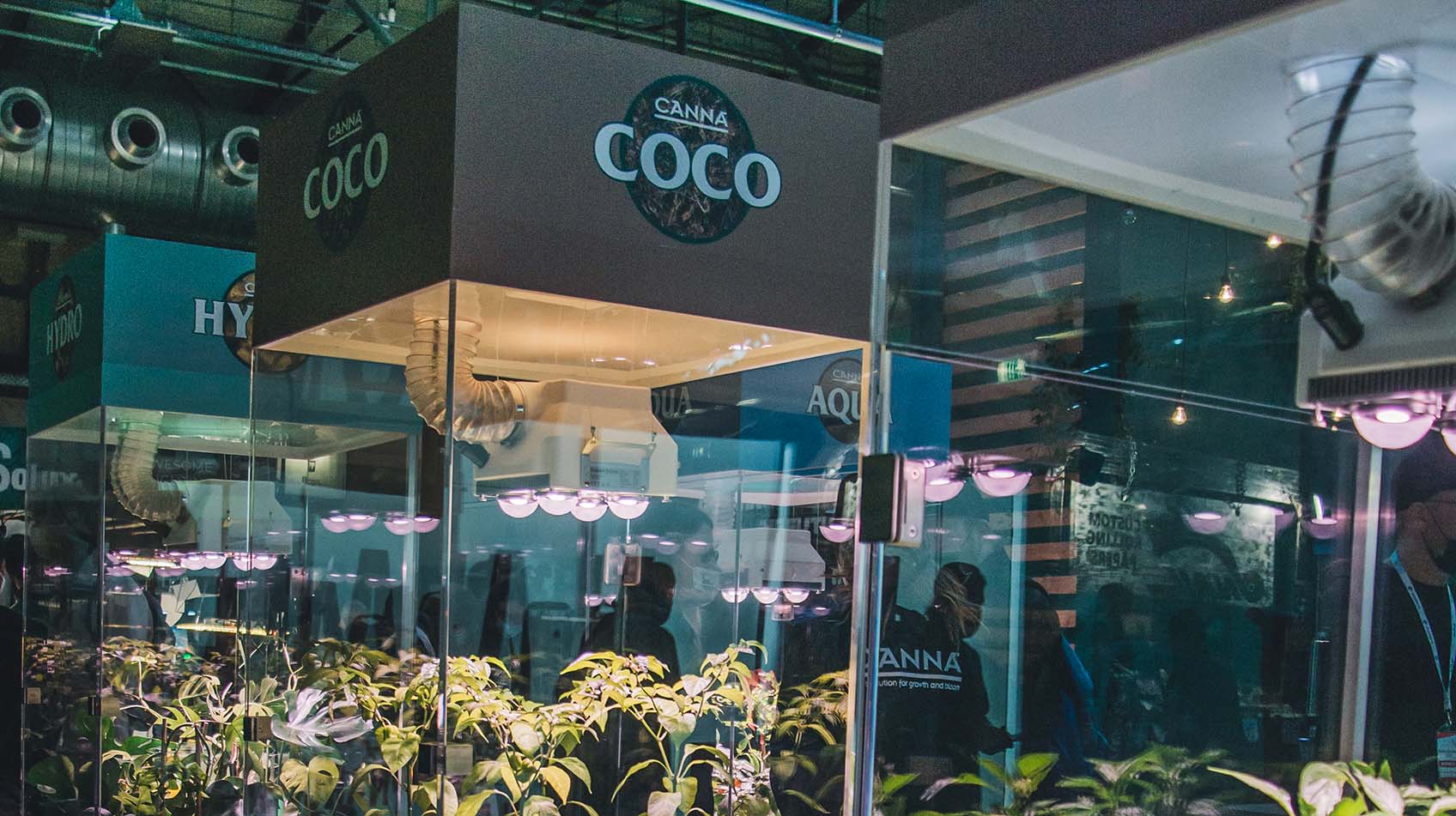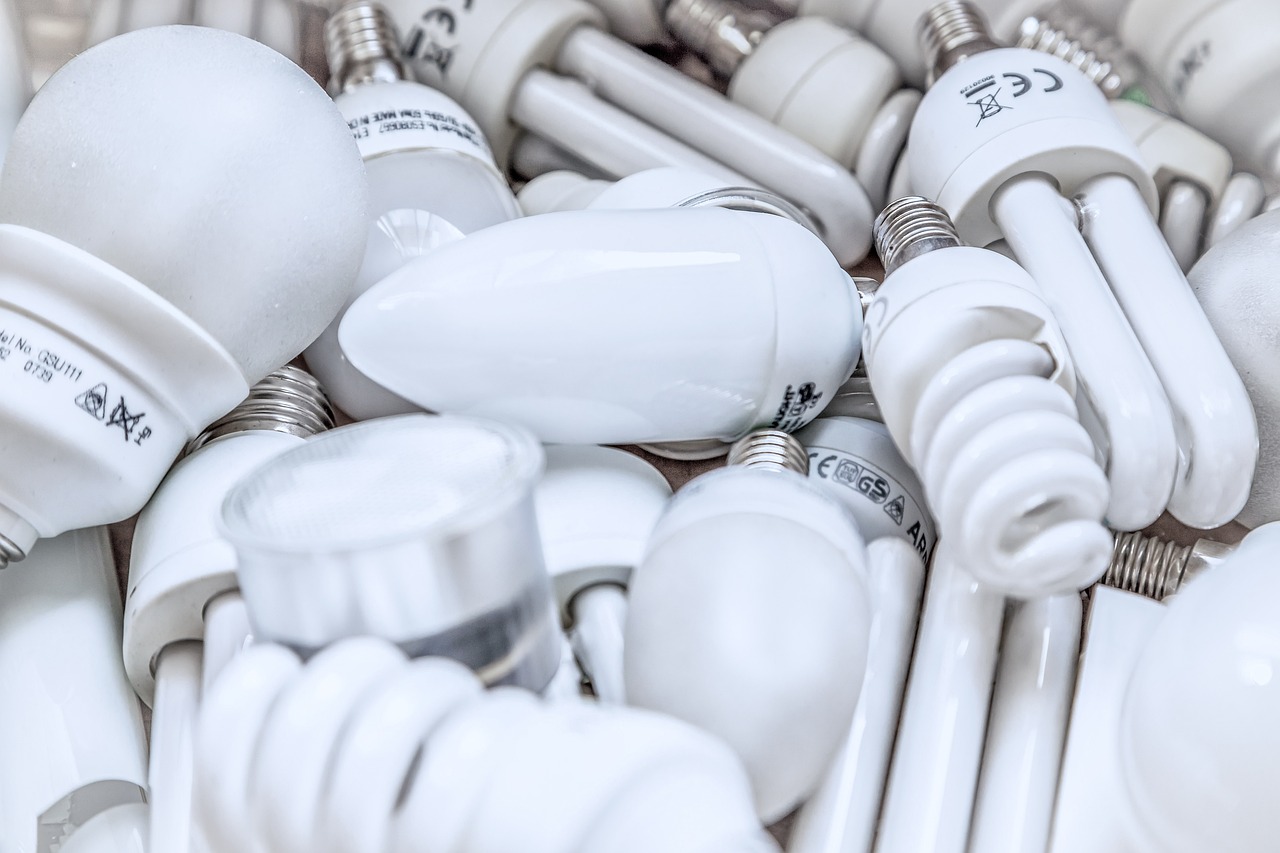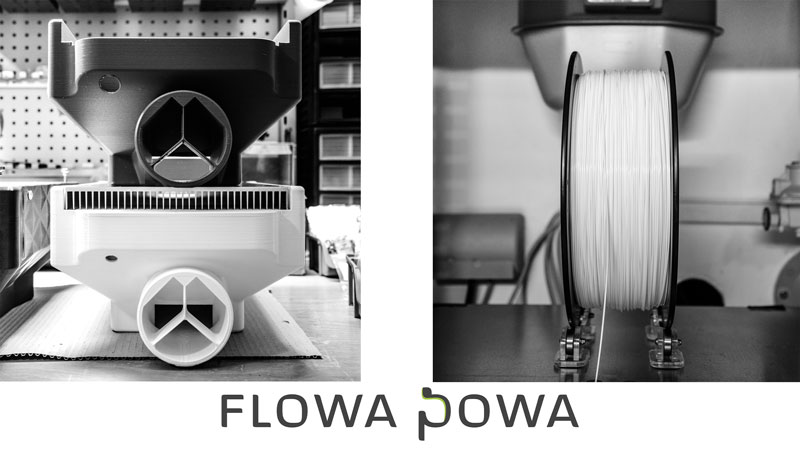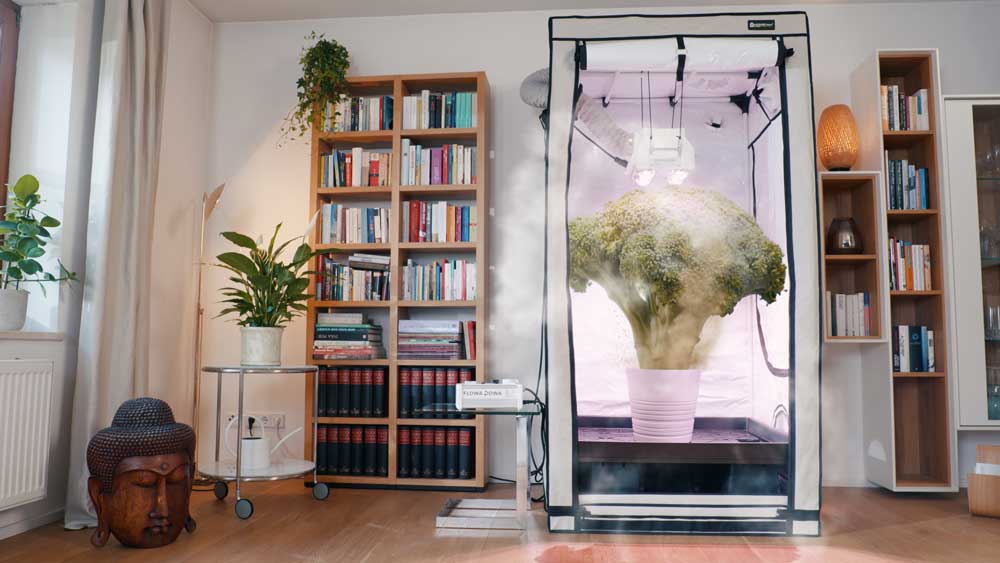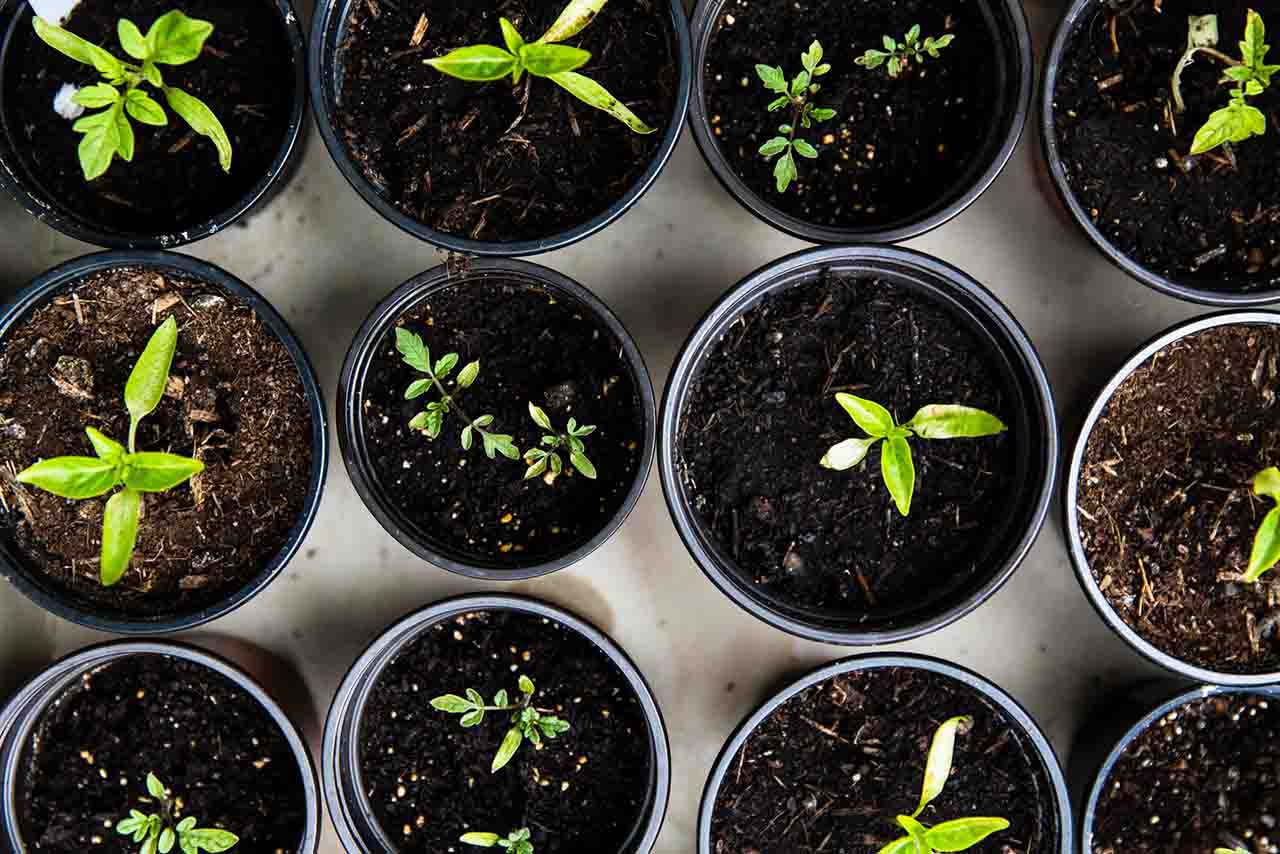Homebox, Sanlight LED and Primaklima – ultimate brands for maximum yield?
You’ll learn about:
Sanlight LED, Primaklima and Homebox Growbox set – these are names that will probably mean something to most people in the industry. They are represented at every hemp fair, have been in the business for years and stand for quality. The following article is about the classic setups with exactly these components. We go into detail about the manufacturers and give an overview. Reading time approx. 5 min. 🙂
Short and sweet
Recap: The classic or conventional setup
A conventional setup consists of a tent, light, ventilation, and filtration. Then, depending on taste, plant and budget, possible planting, irrigation or climate systems are added. There is no limit to the imagination here.
In the following, we will concentrate on tent, light, ventilation, and filtration. Because this is exactly where the brands or manufacturers mentioned come into play.
Homebox Growbox – the most famous grow box or grow tent manufacturer?
Grow tents from Homebox are easy to set up, stand stably and reflect light well from the inside – we can confirm this from our own experience. The ventilation grids at the various points are well dimensioned and the fly screen itself is stable. The air openings can also be closed well. To do this, simply insert the round fabrics into the openings. So neither air nor light gets out of the box. For power cables or hoses, there are the so-called socks: Feedthroughs that can be lashed together at the outer end on the outside of the box with a cord. This way the fabric hugs the hose or cables and the box is more or less tight. Indeed, it is important that no insects or vermin crawl into the box. Once you have caught a pest, it can ruin the whole run.
Connect with other growers on Telegram!

Grow tents from Homebox are available in different model series (Ambient, Vista and Homelab) and in all possible sizes. While the Ambient and Vista home boxes are beige on the outside and have a white coating on the inside, the Homelab models are black on the outside and silver on the inside. All Vista models, compared to the others, have windows made of transparent foil, so you can see inside the box. They are also flatter and rather wide. In terms of price, Homebox is a premium manufacturer.
Are there any alternatives to Homebox Growbox?
The growboxes from Homebox are more expensive than other comparable, but offer consistent and good quality. It remains to be seen whether everyone needs the high quality or whether thinner rods would not do, for example. If you don’t want to spend that much money, you can take a look at the Homelab series. With the Homelab series, Homebox Growbox has brought a cheaper model series onto the market, which can be interesting for some.
Even though Homebox is probably the best known manufacturer of grow boxes in Germany, more and especially the larger online stores came up with their own boxes – at much lower prices.
Sanlight LED – New with the Evo series?
Sanlight LED is an Austrian lamp manufacturer, which produces lamps for industry and home use and have been successful in the grower’s market for over 10 years. Through good reliability and function of its lights, Sanlight LED has earned a good reputation. The Evo series is the latest model series of Sanlight LED, which is available as usual in different power classes. Similar to the predecessor series, the second generation of the Q-series, the lights always consist of a core, where the power supplies are housed and where, for example, the power cables are connected, as well as the light elements – see picture.
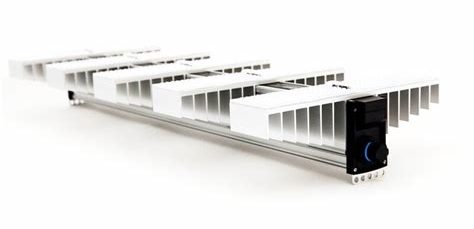
Depending on the model, there are different lengths of cores and different numbers of light elements. A 320 watt lamp (Evo 5 model), for example, always has 5 light modules, but can recently be either 1 m or 1.2 m long. This is to ensure that the light shines down from above as homogeneously as possible. All Sanlight LED luminaires have in common that the housings are still made of aluminum and the LEDs are protected by secondary optics.
Sanlight LED states that the lamps emit a full spectrum light. Compared to other manufacturers or the FlowaOne, the light appears whiter and has rather no purple cast. In operation, the lights get up to 70 °C hot, because the light elements are cooled passively via the cooling fins, as in the previous series. Passive cooling means that no fan or other active component ensures that air or any other medium flows over the cooling fins, which would increase the cooling effect. So the heat is given off by the LEDs to the cooling fins, which in turn give off the heat to the environment, meaning the air in the grow box. So for those who are already a bit warmer in the box (e.g. because it is in the attic in the summer), it will be even warmer.
At first glance, the new features of the Evo series are the higher wattages of up to 320 W per lamp and the different lengths available for lamps with the same wattage.
Primaklima – Premium fans for premium yield?
At the end of the day, there is one goal: to get as much yield out of your run as possible without worrying. So the question also arises when it comes to ventilation and filtration: Is it worth spending more money here in order to be able to harvest more yield in the end or to have fewer headaches? If you ask around in the grow store or online, Primaklima fans and filters are often described as premium. We would like to get to the bottom of the question, what is premium about it and whether premium quality also means premium harvest.
Why are filters and fans important?
Plants that grow in the greenhouse instead of in nature, of course, require the same conditions as in their natural environment. This means light, water, nutrients, and atmosphere. Fan and filter ideally provide the right atmosphere inside the grow box and also outside. Roughly speaking, the fan provides a steady supply of fresh air and the filter neutralizes odorous substances in the stale air. In addition, heat, which is generated by the lighting in the grow tent, for example, is also removed. The same applies to moisture, which can occur naturally in the box and must be removed. If it is too humid in the box, mold can easily develop.
The filter on the other hand is not influential for the plant, but rather for the grower or plant caretaker. If the plant produces odorous substances during its growth, which some people find annoying, this will attract attention from this negative-minded group of people. A good filter therefore ensures an odor-neutral climate in two senses.
What are the advantages of a good filter and fan?
Quite simply, they work reliably and do what they are supposed to. Sounds boring, but that is exactly the task. So a good fan, whether it’s from Primaklima or another manufacturer, provides the plants with a steady supply of fresh air while making little noise and consuming little power. In addition, it can be regulated (you could reduce the fan in the growth phase or at night, as less air exchange is needed here) and does not fail.
Provided the filter is sized correctly (i.e., it is the right size for my tent/plant type), it should filter out any odor, not clog the airflow and not suddenly stop filtering (e.g., because it’s end of life).
A Primaklima fan for a growbox
An example is the Primaklima model PK125WHSP-EC, which costs just under 300 EUR and is the smallest Whisperblower model by Primaklima with 800 m3/h. This is an EC fan (motor technology), which can be controlled continuously, consumes a maximum of 170 watts of power and has a 125 mm flange connection. Primaklima’s Whistperblower fans are supposed to be quieter than other models, which is why this model should serve as an example here.
The actual fan in the white housing comes from ebm-Papst, a leading German manufacturer in the ventilation technology segment. Fans from ebm-Papst are of very high quality (we have also only used ebm-Papst fans in the FlowaOne since the beginning), but they also cost significantly more than comparable competitor products. At 800 m3/h, the fan delivers a massive airflow, which is probably far too high for most home users. Up to a grow box size of just under 2.5 m by 2.5 m, you are probably more than adequately supplied here.
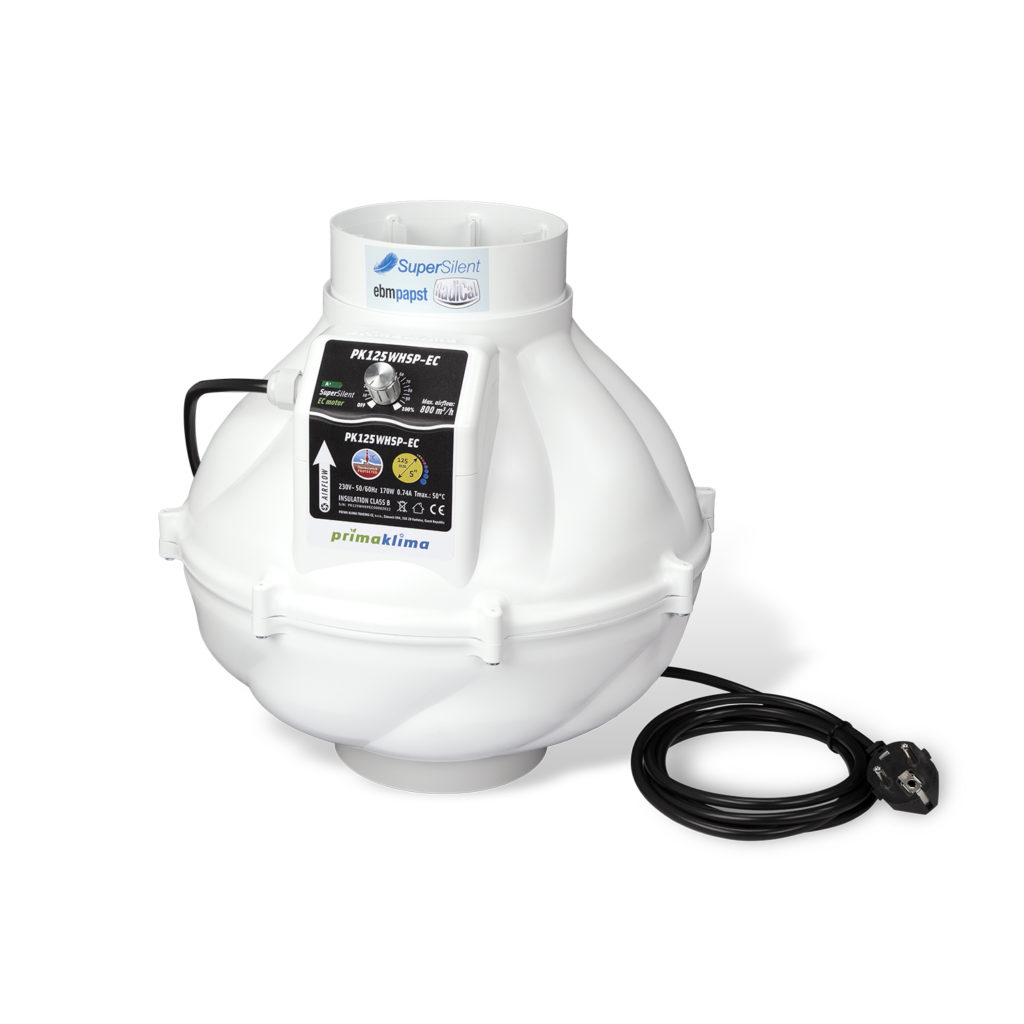
Source: https://primaklima.com/de/shop/ventilatoren-de/pk125whsp-ec/
